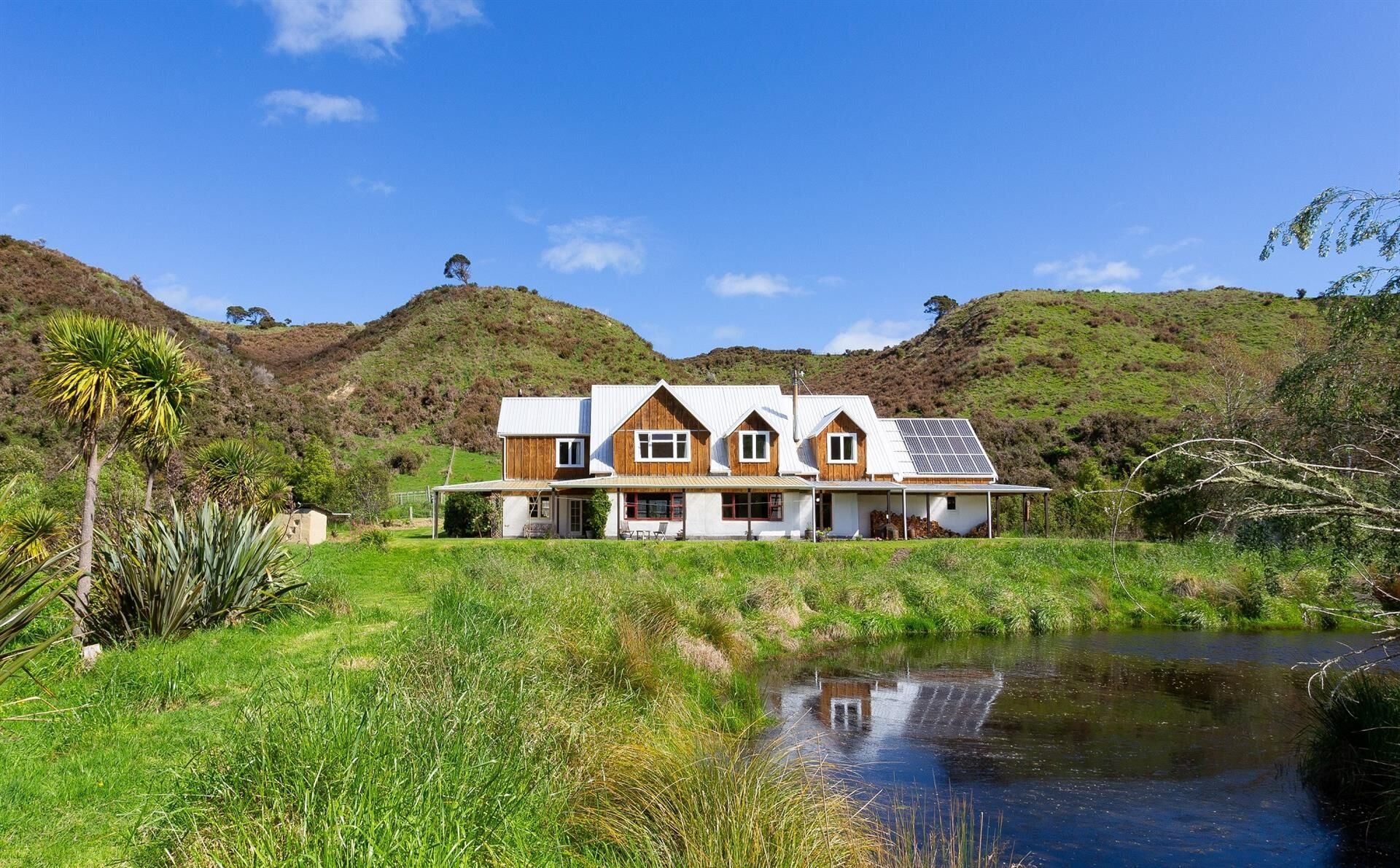Rare cob home close to burgeoning tourist attraction is placed on the market for sale

The 385-square metre four-bedroom residence is located near the historic Central North Island settlement of Ūpokongaro, some 12-kilometres east of Whanganui.
It was constructed using a building method called cob – a fusion of clay, a bit of straw, and small shell-rock. The resulting mixture is formed into cob - an old English word for 'lumps' – which is literally thrown onto the wall framing and pressed in by hand. The construction method is popular in the Middle East – where multi-storey buildings are built using cob.
It is an extremely slow and messy process during the building phase – but delivers a sturdy, incredibly durable, fireproof, and environmentally-friendly dwelling upon completion, being naturally warm in the winter and similarly cool in the summer.
The Ūpokongaro dwelling for sale, known as Matatara Cob House, took several years to build to New Zealand Earth Building Standards – with its original owners completing the process by hand in 2012. An estimated 80-tonnes of cob were used in the process.
The residence is built on a concrete slab flooring foundation for solidity, with steel-reinforced concrete wall framing, into which the cob is thrown. The residence sits on some 13.33 hectares of serene bush land – most of which is designated under QEII covenant as a protected environmental wetland.
With a full code of compliance, the house meets official New Zealand design and construction standards “setting out requirements for the materials and workmanship requirements for the use of unfired earth in the form of adobe, pressed earth brick, rammed earth, or poured earth.”
Matatara Cob House was designed to be spacious and environmentally-friendly – featuring a large study, a substantial farmhouse style kitchen with wood-fired stove, three bathrooms, an upstairs cinema room, and internally access double garage. Outbuildings include a hut that suitable for conversion into extra accommodation and a cob chicken house.
The home and lifestyle block have now been placed on the market for sale through Bayleys Whanganui, with the deadline for offers closing on November 25. Salespeople Knud Bukholt and Karen Bukholt said the truly unique property was expected to attract strong interest from environmentally conscious buyers with a passion for nature.
“The home was designed to function off the main power grid,” said Knud Bukholt.
“Electricity is generated through solar paneling, with back up in the form of a diesel generator. Hot water is produced both through a gas califont and off the back of the wood-fired stove, water is collected off the roof, and the home has its own sewage treatment plant.”
Mr Bukholt said Matatara Cob House could be purchased as either a private dwelling – or for potential conversion, subject to council consent, into a commercial accommodation provider.
“The property will appeal to nature lovers due to both its environmental ‘off the grid’ fittings, and also being strategically surrounded by a wetland and area,” he said.
“Conversely, Matatara Cob House is close to a burgeoning tourism attraction which has led to the regeneration of numerous small settlements around New Zealand – from Kaikohe in the north to Central Otago in the south, The New Zealand Cycle network has been a boom for provincial locations.
“At the end of last year Ūpokongaro became a pivotal junction in New Zealand’s much-vaunted and popular national cycle network as a consequence of opening the Ūpokongaro Cycle Bridge on the Mountains to Sea Cycle Trail running between Ohakune and Whanganui,” he said.
“The 130-metre long bridge was built at a cost of $3.4million and connects the 67-kilometre Whanganui River Road arm with and the 19-kilometre Ūpokongaro to the Tasman Sea section. It’s a short ride from Matatara Cob House.”
Additionally, for hard-core mountain bikers, Matatara Cob House is also just a few minutes ride away from the frequently ridden Lismore Forest.
The Ūpokongaro area was settled by Europeans in the 1860s after it was identified as an important ferry crossing and riverboat stop within the region. In 1866, settler John Kennedy built a hotel and a store at Ūpokongaro, with a school being constructed some four years later, and a church following seven years after that.
St Mary’s Anglican Church is still standing today and will be one of the key historical viewing points for riders on the Mountains to Sea Cycle Trail and Tour Aotearoa.
For further information about Matatara Cob House,
contact Knud Bukholt at Bayleys Whanganui.
**M: +64 27 222 6161 **
E: knud.bukholt@bayleys.co.nz
Click here for more information on the listing.

